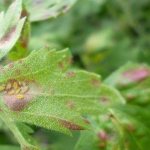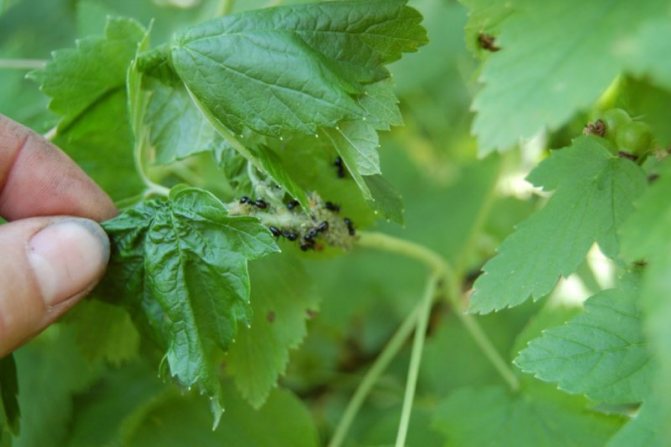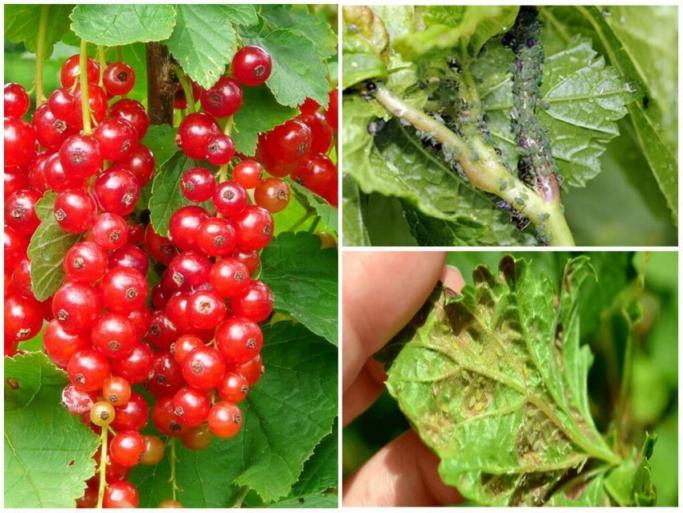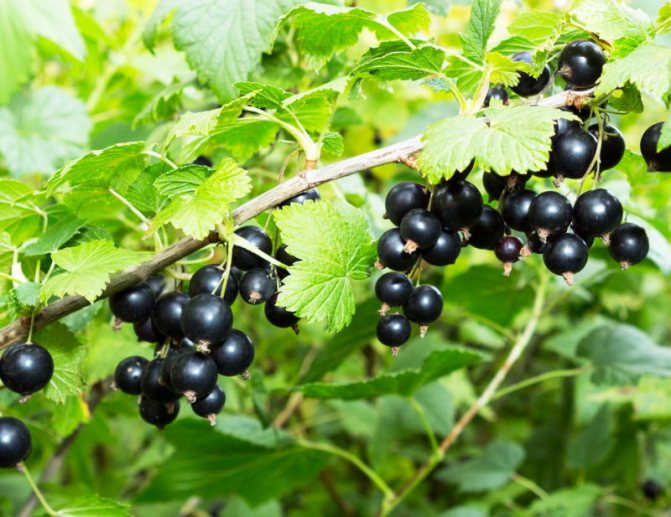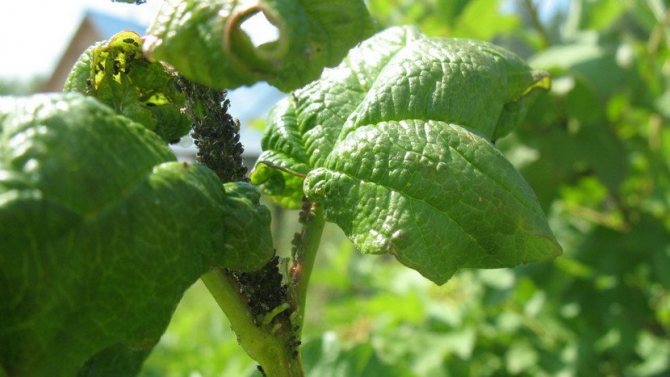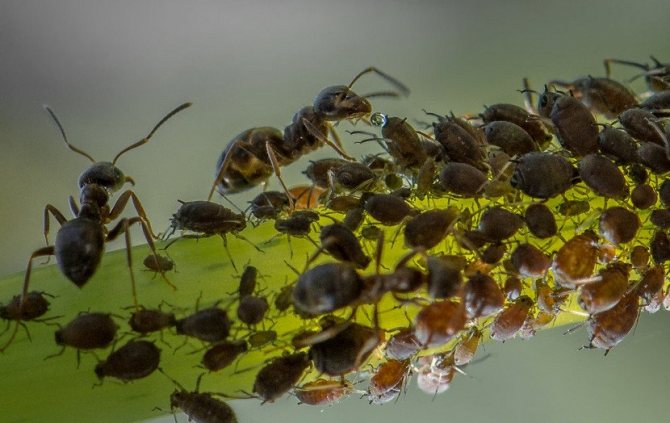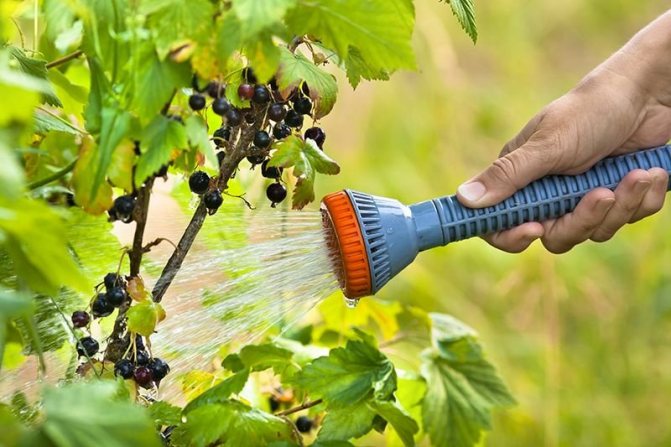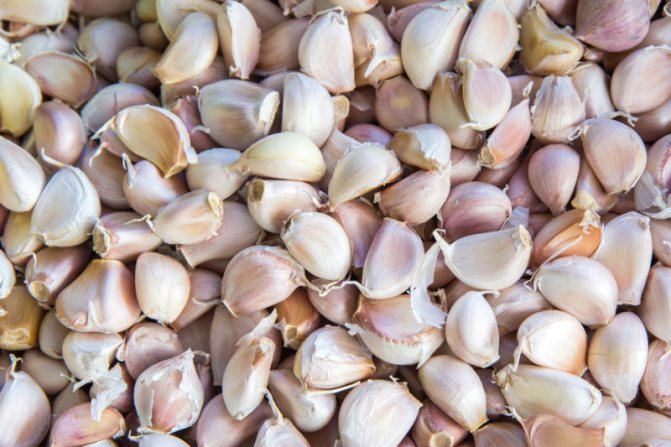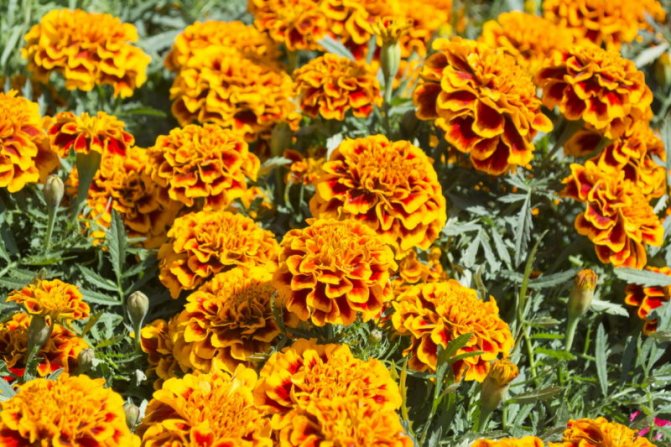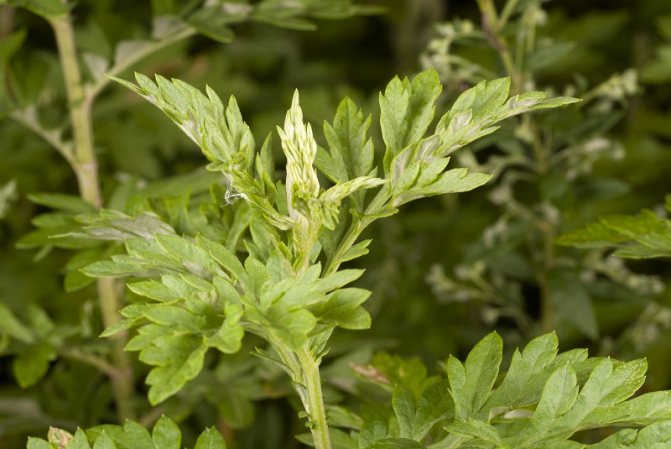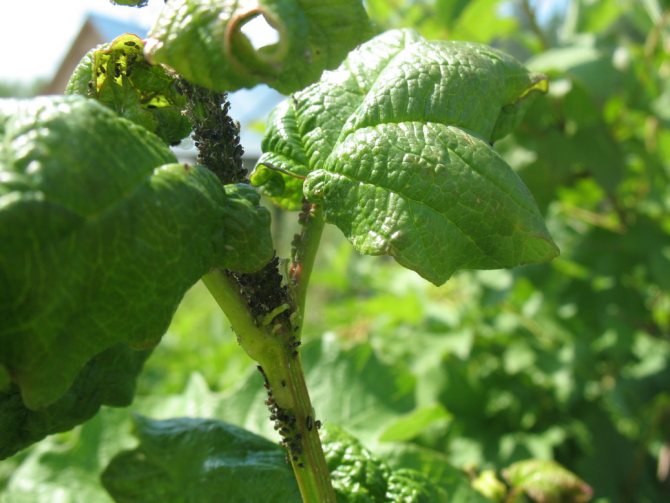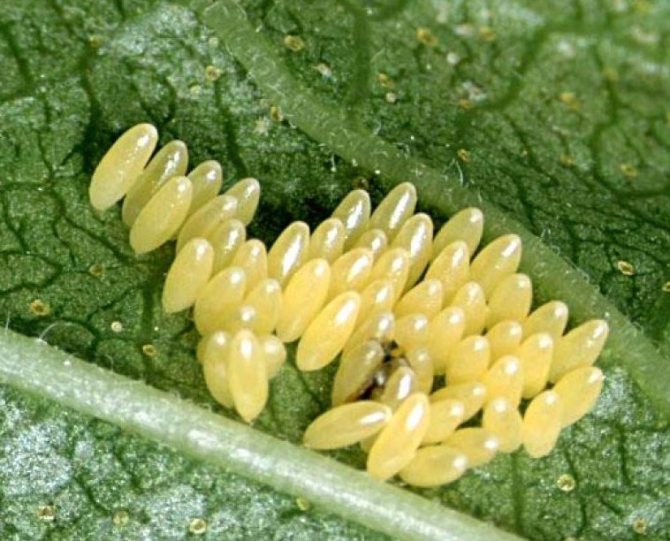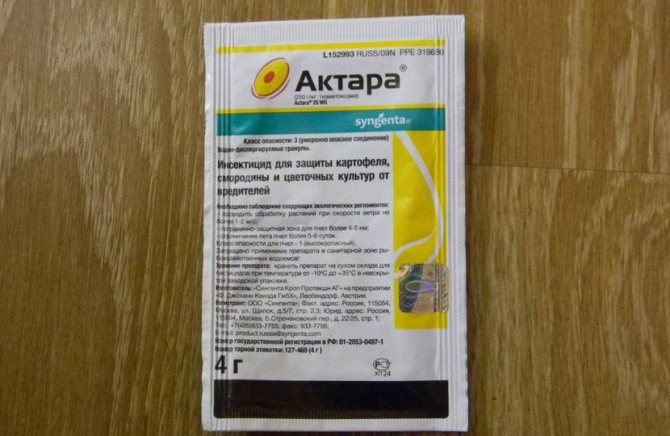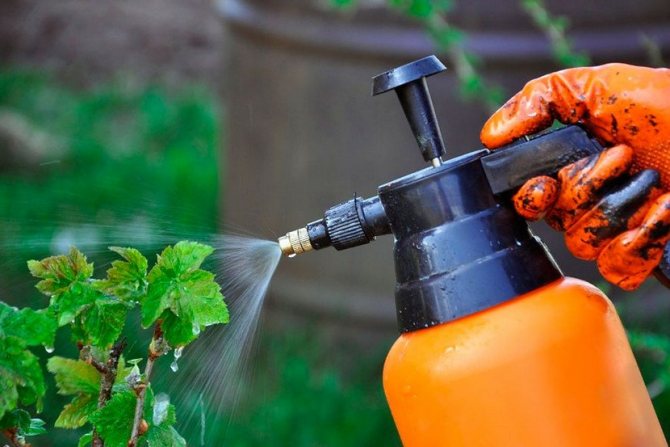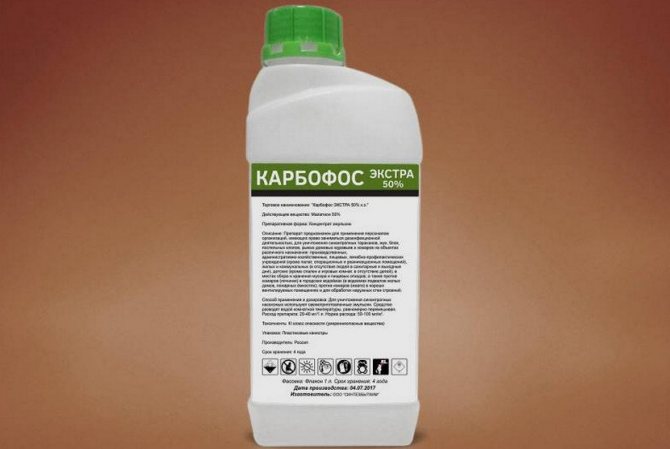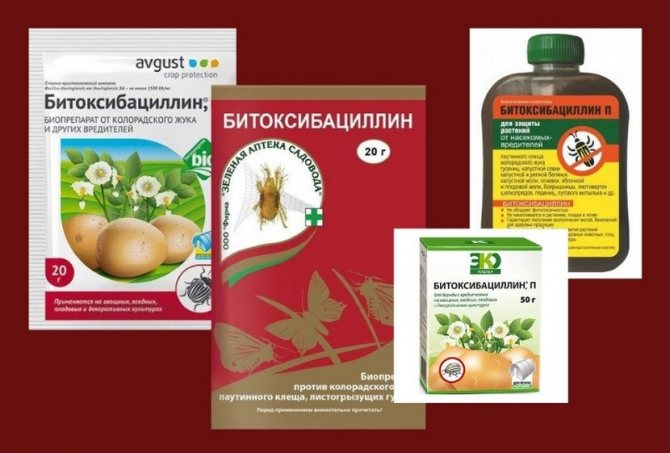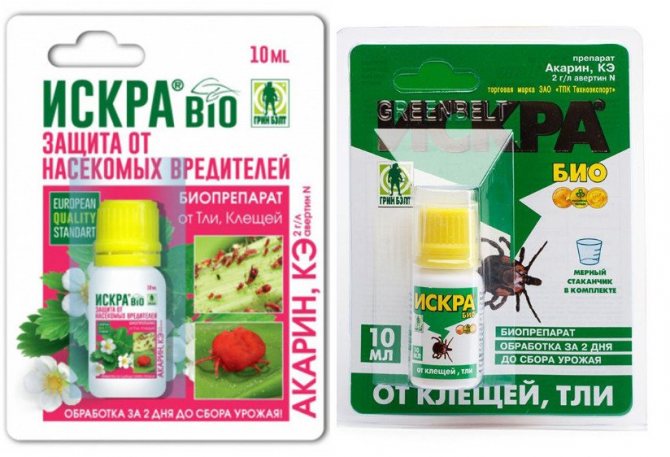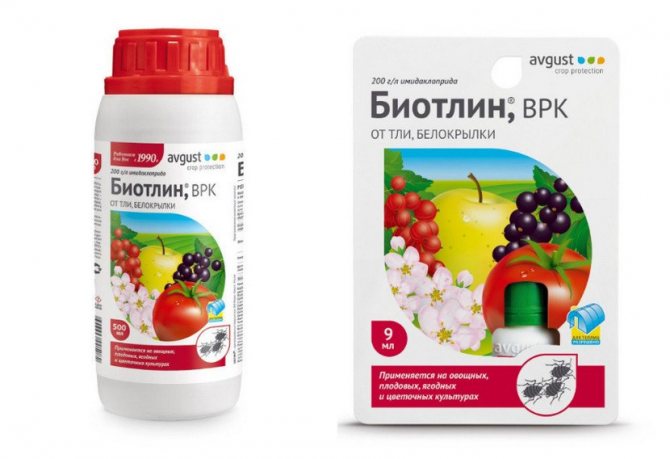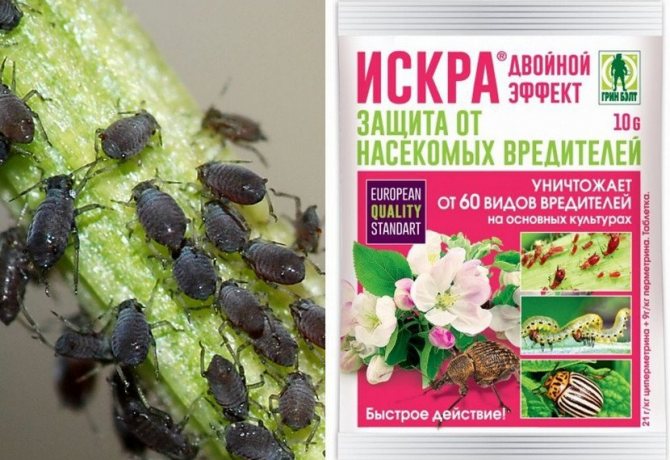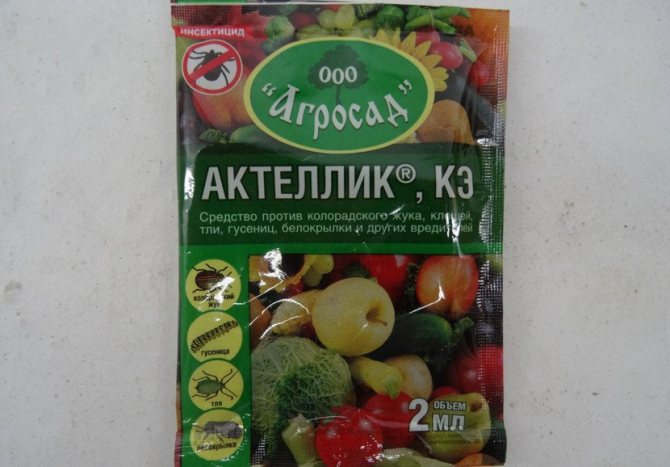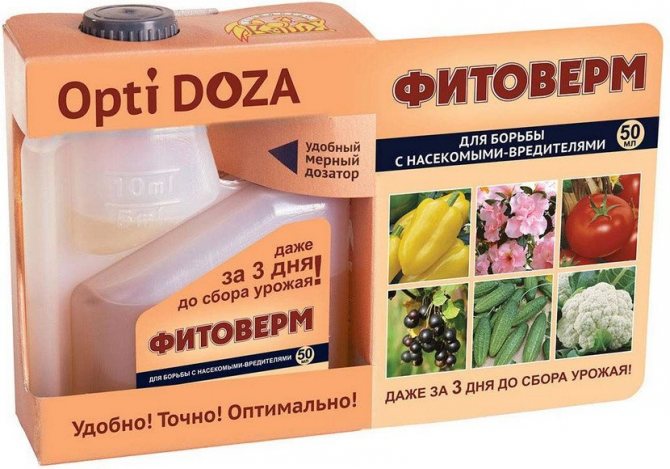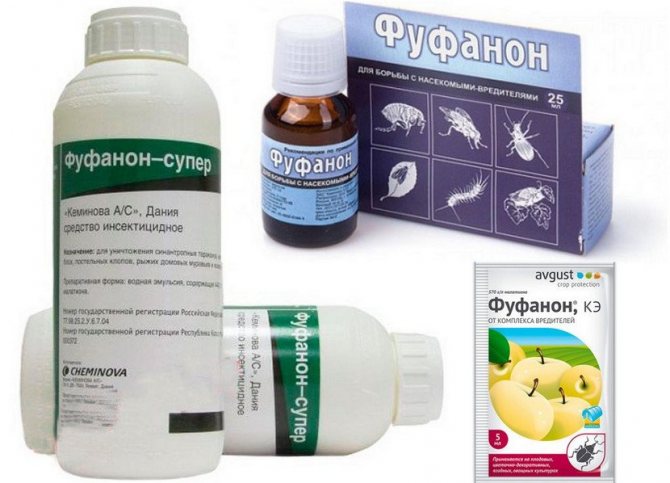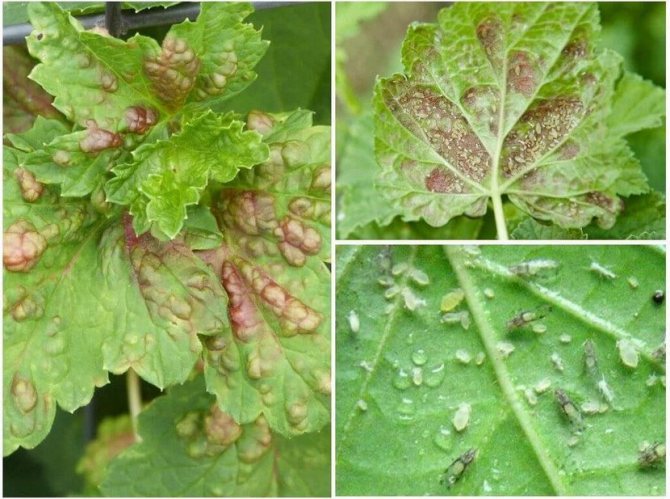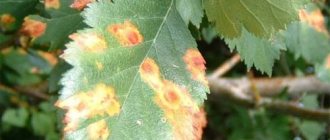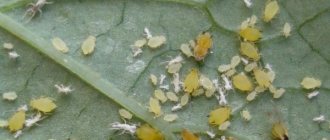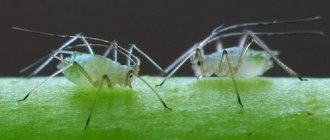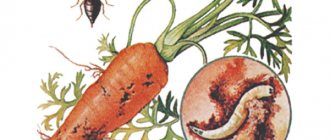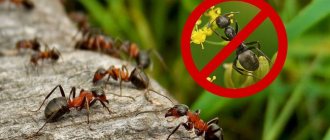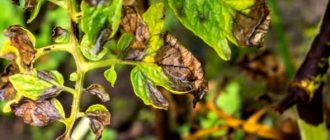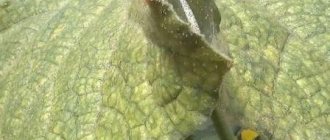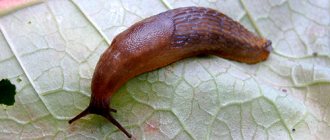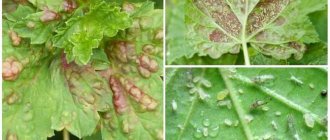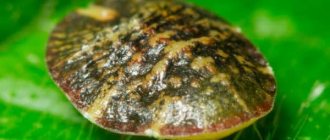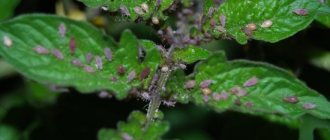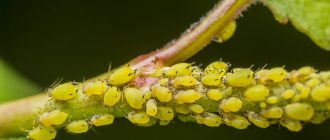A summer cottage is a place for growing your favorite crops. But there are also such plants, without which it is simply impossible to do during blockage. The currant bush is an obligatory vegetable "attribute" of the garden, not only obligatory, but also a favorite.
The plant does not require much attention, constant care, but it is a delicacy for most insects. A frequent visitor is aphid, which appears on the currant and destroys its green part.
Infection can be avoided or stopped. To do this, select special means of combating chemical or natural origin.
How to determine that aphids have appeared on the currant
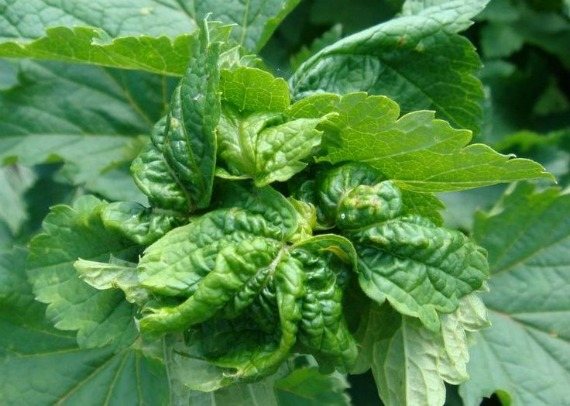
Almost all gardeners are familiar with the picture when the apical leaves on the currant are crowded together - this means that the berry bush has been attacked by aphids. Such an early appearance of the pest is explained by the fact that in the fall the female made a clutch of eggs in the bark of the plant, and she overwintered safely. With the onset of heat, larvae emerged from the eggs and settled on young and juicy leaves, the juice of which serves as food for them.
Colonies of larvae suck out cell sap from the leaves, as a result of which reddish swellings appear on them. The sheet plates are deformed and twisted. If the problem is left unattended, the aphids are able to capture the entire plant and leave the gardener without a tasty and healthy berry.
General information about the pest
When we talk about aphids and their pests, we must remember that we mean a kind of super-family of insects, which includes more than 4000 different kinds of specific pests and parasites. Of course, in a temperate climate, which occupies the predominant area of our country, not all of these species are able to survive, therefore, to a certain extent, we were lucky than, say, the inhabitants of the North American continent or Australia.
Among other things, not all species from this huge number are pests on cultivated plants that are used by humans. In one of our previous articles, we examined in detail all the possible types of aphids that can be found on currants in our climate.
In general, representatives of any species are not more than 4 mm in length, have a convex part of the abdominal region, which gives them the appearance of a pear, and the color can vary widely even within the same species, which depends on the environmental conditions and plant pigments that enter the insect's body together with vegetable juice.
Many species have a concise scientific name, which indicates their main host plant. For example, Hyadaphis coriandri prefers coriander, and the green peach aphid (Brachycaudus persicae) prefers peach, and so on.
One of the unique features of aphids is their ability to survive in sometimes rather harsh winter conditions. The wintering process is organized in the egg stage, usually in the bark of perennial plants, which are called winter hosts. At the onset of a warm time, a young aphid hatch from the eggs, which, having received nourishment on the first buds and leaves of the winter host, receives wings and sets off in search of the summer host, on which it produces up to several generations per year. Before the onset of winter, female aphids fly up again, find winter hosts, lay eggs and die.
In the overwhelming majority of cases, aphids can parasitize in the summer on both the winter and summer hosts, although there are species that do not remain on the plants where their eggs overwintered in the warm season.
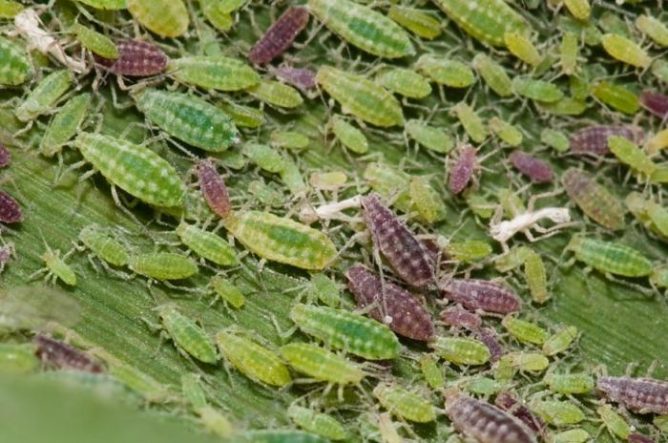

Varieties of aphids
For currants, the most dangerous are 2 varieties of a small and gluttonous pest called aphids. Gooseberry (shoot) aphids often settle on black currants, and red and white currants are damaged by a gall (leaf) variety.
Gooseberry shoot aphid
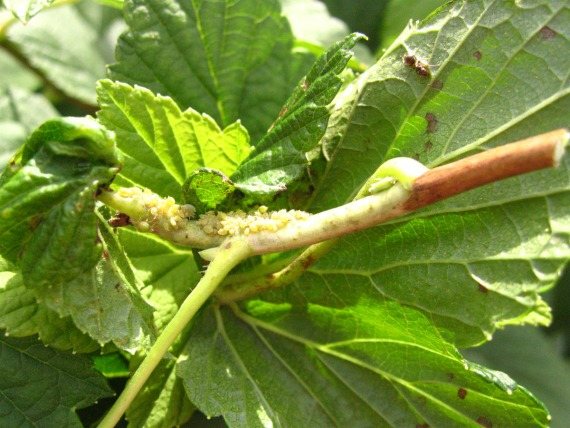

If twisted leaves began to appear on the upper shoots of black currant, this is a sure sign that aphids have settled on the plant. Hiding in a cocoon of currant leaves, the pest protects itself from insect predators and continues its development, sucking the juices out of it.
Soon the leaf will dry out, and the aphids will move to neighboring healthy shoots.
The berries on such a blackcurrant bush grow small and tasteless and very often crumble spontaneously.
Gall aphid
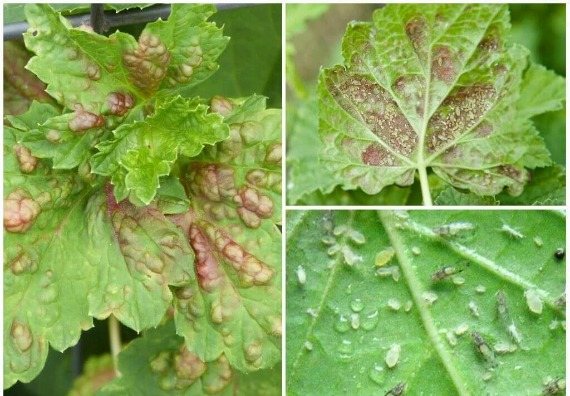

The characteristic swellings on the leaves of red and white currants serve as a warning to the gardener that colonies of gall aphids have appeared on the plant. Insects settle on the back of the leaf and, piercing the tissue with their proboscis, suck out the juice.
The leaf plate begins to deform, subsequently the swellings acquire a reddish tint. If you do not come to the aid of the berry bush, the yield will decrease significantly, and the plant itself will slowly begin to die.
Why are aphids on currants dangerous?
Hiding on the back of a currant leaf or turning it into a cocoon for their safety, aphids suck juice from the leaves, as a result of which they dry out. Numerous colonies of the pest weaken the plant, making it vulnerable to bacteria and viruses. As a result - the emergence of dangerous diseases that can lead to the death of the plant.
On close inspection of currants with signs of aphids, you can see how garden ants scurry about in a proprietary manner. They feed on the honeydew produced by aphids and are the main vectors of the pest. Therefore, the fight against aphids must be carried out in parallel with the destruction of anthills in the garden.
Read more in the article: How to get rid of ants in a summer cottage once and for all
In addition, the sweet substance secreted by aphids covers the currant shoots with a sticky coating, preventing the plant from breathing. On it, harmful fungi quickly settle and very actively develop.
It is because of the colonization of red and white currants by aphids that it suffers from a disease such as black soot dew.
How to deal with aphids in the spring using folk remedies
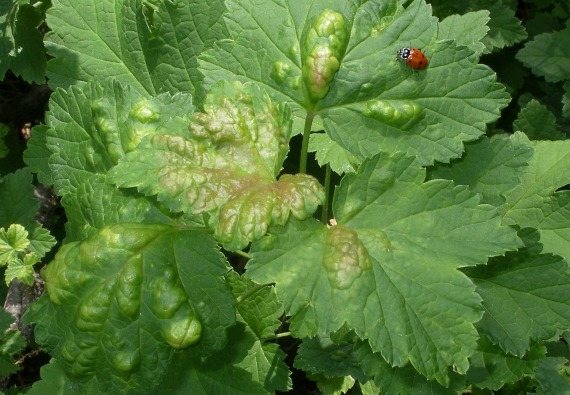

In the spring, when there is only a danger of aphid spreading over the garden plot and single foci of gall or gooseberry aphid lesions appear on the currants, you can simply cut off or cut off the infected leaves and shoots and burn them.
Time-tested folk remedies that have shown their effectiveness in the fight against a small but dangerous pest will also come to the aid of the gardener.
Processing currants with boiling water
In early spring, when the currants are just getting ready to wake up, boiling water is poured over it. During this period, hot water will not harm the branches, but it will destroy the clutches of eggs and pests hibernating in the bark.
The water is brought to a boil, poured into a watering can with a fine strainer and the entire crown of the currant bush is poured from a low height.
When the time comes for the appearance of green leaves, they will be without signs of aphid damage.
Laundry soap against aphids on currants
One of the easiest and most affordable ways to combat aphids on currants is to treat plants with soapy water.
The principle of operation is as follows:
- After the liquid evaporates from the surface of the leaf, a protective film forms on it, which makes it difficult for the aphid to feed and restrains its movement.
- For this, laundry soap, or even better - tar soap, is grated and poured with hot water until dissolved.
- For 10 liters of water, you will need 1.5 pieces of laundry soap. If the soap is liquid, then it is taken in a proportion of 125 g / 10 l of water.
On a note. A soapy solution will be effective if aphids have just appeared on the currants. For a large number of pests, more effective means will be needed.
Ammonia against aphids
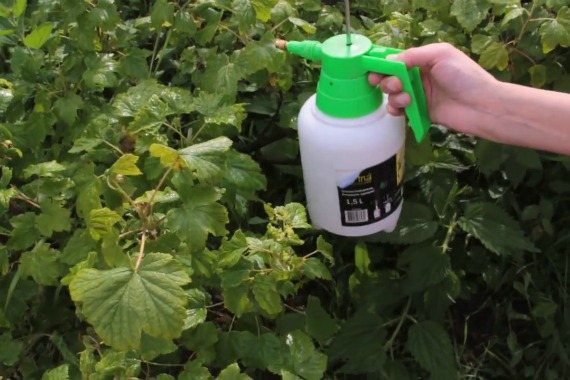

A very effective way to combat aphids can be ammonia from a home medicine cabinet. To prepare a working solution, a gardener will need:
- ammonia (10%) - 30-40 ml (2 tbsp. l.);
- soap solution - 2 tbsp. l. (you can use grated laundry soap dissolved in hot water, any dishwashing detergent or liquid soap in the same amount);
- 10 liters of clean water.
For convenience, all components can first be diluted in a small amount of water, and then the volume can be brought to the required value. Next, the solution is poured into a sprayer and the currants are treated against aphids.
On a note. In addition to killing aphids on currants, ammonia serves as a nitrogen supplier and nourishes the currants with nutrients in an accessible form.
Baking soda
A safe remedy that gardeners often use in the fight against aphids.
- Water - 10 liters;
- baking soda - 10 tbsp l;
- soap solution - 30-40 ml.
Everything is thoroughly mixed and used for processing currant bushes.
Soda ash
Based on feedback from gardeners, soda ash is more effective than baking soda for controlling aphids.
To prepare the solution you will need:
- 2 tbsp soda ash powder;
- 1 tsp iodine;
- 30-40 ml of liquid soap;
- 10 liters of water.
All components are mixed and the working solution is ready for use.
On a note. Treatment of currants with a solution of soda ash with the addition of iodine protects the plant from powdery mildew.
Mustard
Mustard powder is effective due to its pungent odor and bitter taste. The solution is prepared from 10 liters of water and 10 tbsp. dry powder. It is not difficult to increase or decrease the amount of funds, observing the proportion: 1 tbsp. mustard per 1 liter of clean water.
Aphids and spider mites on currants a working method of struggle - video
Garlic
Chopped cloves of garlic in the amount of 100 g are poured with warm water (1 l). After 2-3 hours, the liquid is decanted, the garlic gruel is squeezed out and re-poured with 1 liter of water. After a while, the next spin is carried out, and both liquids are mixed. The concentrate is poured into a glass bottle and sealed tightly.
To prepare the working solution, take 300 ml of the extract per 10 liters of water. Processing is carried out three times per season with an interval of 15-20 days.
Serum
Sour and pretty re
The viscous smell of a dairy product can scare away aphids from currant bushes.
The serum is used in its original form, without additional preparation. The treatment is carried out every 3 days in order to quickly get rid of the parasitic insect. For prophylaxis, spraying once every 5-7 days will be enough.
Vodka
How alcohol affects the insect is not known for certain, but some gardeners argue that spraying the back of the currant leaf contributes to the complete destruction of gooseberry and gall aphids.
Wood ash
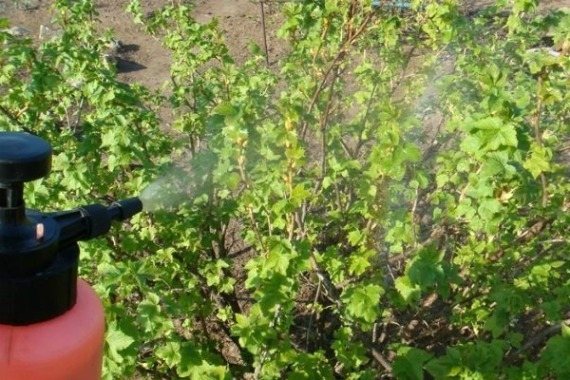

Natural fertilizer obtained from burning firewood does an excellent job of destroying pests on currants.
- Sifted ash in the amount of 300-400 g is poured with water (10 l) and boiled for 15-20 minutes.
- Cool and filter by folding gauze in several layers.
- Laundry soap or dishwashing detergent dissolved in hot water is added - 2 tbsp. l. Mix thoroughly.
- The working solution is used for spraying, trying to wet each leaf and shoot from all sides.
The following procedures are carried out 5-7 days later as a preventive measure.
Onions and Onion Hulls
Both the bulb itself and the integumentary scales are used. You will need:
- 100 g of onions;
- 200 g of onion husks;
- 10 liters of hot water.
Chopped onions and husks are placed in a bucket of hot water and left for 3-5 days. After the time has elapsed, the infusion is filtered and the berry bushes are sprayed.
A week later, the 2nd treatment is carried out, and after another week, the currants are sprayed for the 3rd time.
Hot (hot) pepper
Crushed hot pepper pods are poured with water in a ratio of 1:10 and boiled for half an hour over low heat, not forgetting to cover with a lid.
After 2 days, the broth is filtered - a sharp concentrate is obtained, which is used in a diluted form. For 1 liter of water, take 100 ml of the prepared product and spray the currants.
Healthy bushes are also subject to processing in order to prevent the appearance of aphids.
Makhorka or tobacco dust
Concentrate based on tobacco dust (makhorka) is prepared in the proportion: 100 g of dry matter per 1 liter of water. The mixture is brought to a boil and simmered over low heat for an hour
The composition is cooled, filtered and diluted with water, using 300 ml of tobacco broth per 10 liters of water.
Re-processing is carried out after 2-3 days.
Herbal infusions
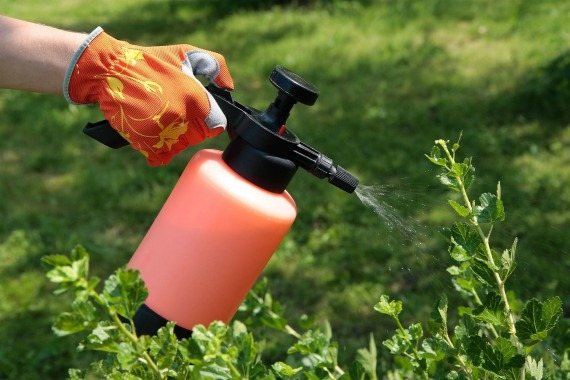

In the spring-summer period, there are more than enough raw materials for the preparation of herbal infusions and decoctions, and gardeners successfully use them to combat aphids on currant bushes.
On a note. It is recommended to add 30-40 g of soap to all folk remedies for treating currants against aphids for better adhesion to leaves and shoots.
Potato tops
In order to prepare a poison for aphids based on potato tops, take 1 kg of chopped stems together with leaves and pour 10 liters of boiling water. After 2-3 days of infusion, the liquid is decanted and used to spray the currants.
There is always such a raw material for the preparation of an aphid remedy in the garden. But the problem is that potatoes ripen late, after the aphids have time to harm the plants. Therefore, experienced summer residents harvest it for future use. At the end of summer, healthy potato tops are harvested, dried and stored until the next season.
Dandelion
All parts of the plant, along with roots and flowers, are suitable for preparing dandelion infusion.
400 g of raw materials are crushed and poured into 10 liters of warm water. After 3 hours, the infusion is filtered and immediately used for processing currant bushes.
Yarrow
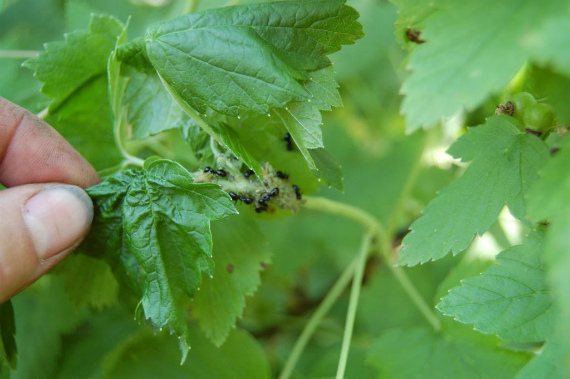

From a well-known medicinal plant, both infusion and decoction can be prepared.
For infusion, take 1.5 kg of yarrow green mass (or 800 g of dried raw materials), pour three liters of boiling water and leave for two days. After the time has elapsed, the infusion is filtered and the volume is brought to 10 liters.
To prepare the broth, use the same proportions of raw materials and boil the composition for half an hour. Then they cool, filter and add water.
Horse sorrel
The infusion is prepared from 300 g of roots or 400 g of foliage. The crushed raw materials are poured with a bucket of water and left for 3-4 hours. Then the infusion is filtered and immediately used to treat currant bushes against aphids.
If the infusion is prepared from roots and leaves, then you will need 350 g of the mixture per 10 liters of water.
Celandine
The well-known medicinal plant serves as an excellent insecticide for the destruction of aphids.
4 kg of chopped grass (use the whole plant as a whole) pour 10 liters of hot water. Insist 4-5 hours, filter and spray currant bushes until foliage is completely wetted.
It is recommended to carry out work with gloves, because the working fluid has a dark brown color, which will not be washed off immediately from the hands.
On a note. All folk remedies are equally successful in combating gooseberry and gall aphids.
Prevention of infection
Aphids often attack young bushes and those that are overfed with nitrogen fertilizers. Garden maintenance includes preventive measures that prevent the appearance of aphids.One of the important measures is to get rid of ants that carry aphids from bush to bush and protect them from natural enemies.
Scare off pests of plants that are planted nearby. These can be beds with onions, garlic, dill, parsley, basil, tomatoes. Insects do not like the smell of mint, marigolds.
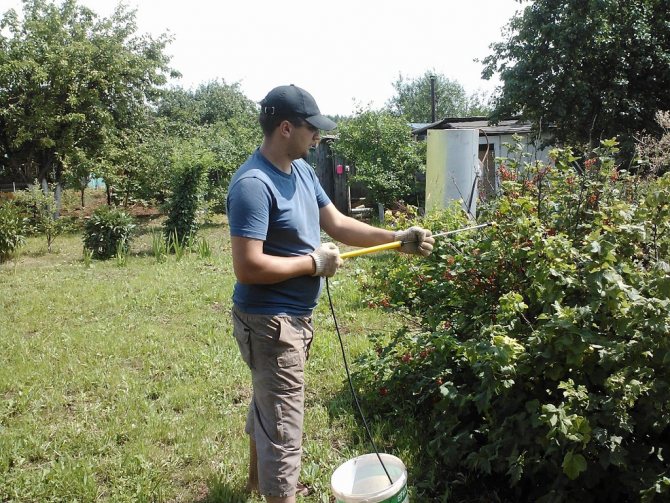

Currant processing.
Effective remedies are herbal infusions. They process currants before flowering or after. These are preventive measures. If there are aphids on the bush, it will not suffer. When you spray the infusion over the leaves, insects will not land on the plants.
To prepare 10 liters, use:
- tops of potatoes and tomatoes - 1 kg insist 4 hours;
- crushed heads of garlic - 400 g insist 5 days;
- grass and inflorescences of chamomile, marigolds, dandelions with roots - 400 g;
- finely chopped onion - 400 g is poured with water, kept for 5 hours.
The natural enemy of aphids is ladybugs, lacewings, wasps, ground beetles. They are attracted by fragrant and melliferous herbs, which are sown next to currants. Ladybugs will not help if there are ants nearby that drive them away from aphids.
The greatest result is achieved by complex measures, including prevention, folk and chemical agents. By constant inspection of the bushes, the appearance of aphids is timely detected. At this stage, it can be destroyed even by simply tearing off the affected leaves.
Other methods of aphid control
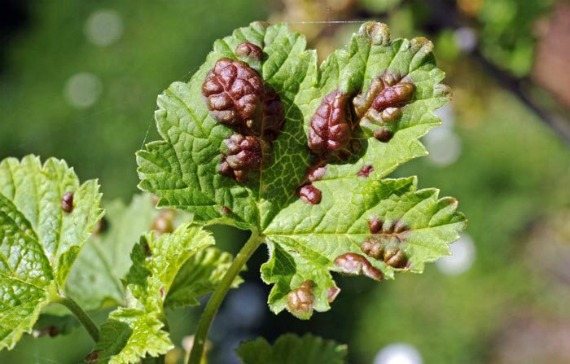

When aphids occupied the garden plot in large numbers, and there is simply no time for the preparation of decoctions and infusions, you have to resort to chemicals to destroy the pest on the currants.
Chemicals
A wide range of such insecticides are available in horticultural centers.
- Aktara,
- Actellik,
- Intavir,
- Karbofos,
- Spark,
- Fufanon.
Each preparation is provided with detailed instructions on the method of application, dosage and use, depending on the stage of the plant's vegetation.
It must be remembered that the use of chemicals is dangerous for birds, beneficial insects, domestic animals and the person himself. Therefore, work is recommended to be carried out using protective equipment: respirator, glasses, rubber gloves.
On a note. Particular attention should be paid to the waiting period after which the berry is safe to eat.
Despite many restrictions, chemicals give a quick and effective result - the pest dies within a short period of time.
Biological preparations
Unlike chemical agents, biological products act somewhat slower and require repeated early treatment in case of unexpected rain.
Prepare solutions, according to the attached instructions, to achieve a greater effect, spray currants with an interval of 2-3 weeks, while there is a threat of aphid spread.
The most popular biological agents:
- Biotlin,
- Fitoverm,
- Aktofit,
- Bio spark.
Ripe berries can be harvested 5-7 days after the last application of the biological product.
Processing of aphids on currants with biological products - video
Output
- Aphids are an insect that is very harmful to currants, destroying young leaves and shoots of the plant, reducing productivity.
- You can fight aphids with folk remedies that are harmful to insects, but harmless to humans.
- The choice of folk recipes for aphids depends on the growing season of the plant. During the pouring and ripening of berries, you need to abandon products with a strong smell and taste.
- Bushes should be processed either early in the morning or late in the evening so that the leaves do not get sunburn.
- Post-flowering treatments do not protect the currants forever. Depending on the chosen method, they will have to be repeated from 10-15 to 2-3 times a month.
How to process currants from aphids, if there are already berries
The ubiquitous aphid can appear on currants when berries are already ripening on it.Processing the plant during this period should be gentle and consist, if possible, of folk remedies. These include improvised household substances and herbal infusions.
Infusion of marigolds
Half a bucket of the crushed plant is poured with a bucket of water and kept for 3 days. Then filtered, add 2 tbsp. l. liquid soap and sprinkle with currants. The flower infusion will be safe for currants even during the ripening period of the berry.
Tomato tops
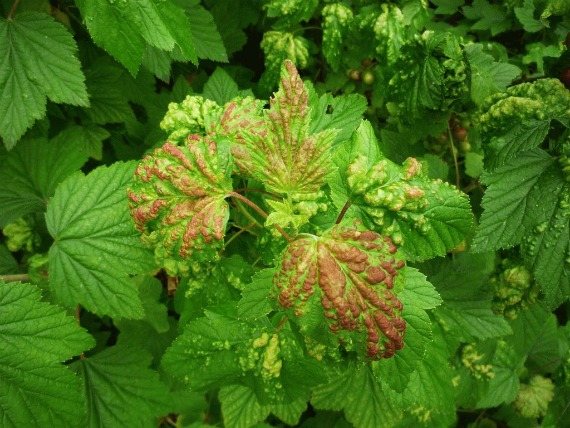

By the time the berries ripen, a sufficient number of stepsons and leaves from tomato bushes can accumulate on the site.
4 kg of green tomatoes (stepchildren will do) or 2 kg of dry raw materials are poured with a bucket of water and put on fire. Boil for 30 minutes and leave for another 3-4 hours for infusion. Then it is filtered and 3 liters of broth per 10 liters of water are used to prepare the working solution.
Tomato tops can be prepared for future use for the next season.
Pharmacy chamomile
The plant, which often appears in the garden from nowhere and is rather considered a weed, serves as a good helper in the fight against aphids during the ripening of berries.
You will need 1 kg of raw materials and 10 liters of water. The mixture is infused for about 10-12 hours, after which it is filtered and diluted with water, observing the ratio: 1 liter of infusion to 3 liters of water.
The use of chemicals on currants with berries should be extremely careful and only if none of the safe methods have brought results. Insecticides are used no later than a month before the onset of currant ripeness.
Additional tips and tricks
- When processing currants from aphids with chemicals, wear personal protective equipment - gloves, glasses, respirators.
- Spraying of shrubs is carried out in the evening in dry, calm weather. In case of rain, repeat everything. Particular attention is paid to young shoots of currants, the lower part of the leaf.
- On the site, they get rid of ants: aphids live with them in symbiosis. Earthen "hard workers" are attracted by the milky secret of the pest, and the ants actively protect the "breadwinners", help migrate and "take" aphids to winter.
- If aphids have chosen cherries, cherry plums, currants and gooseberries, they use “heavy artillery” - chemicals and biologicals. You should not rely on natural farming.
Aphids are a frequent "guest" in the garden and vegetable garden. To prevent the pest from becoming a permanent resident on currants, a triad of measures will help. Spring-autumn prevention of plantations, treatment of diseased bushes, maintenance of order on the site. Folk methods are safe, often also "feed", but require consistency. Chemistry is used for mass infection of currant plantings, if other methods are unsuccessful.
Preventive measures
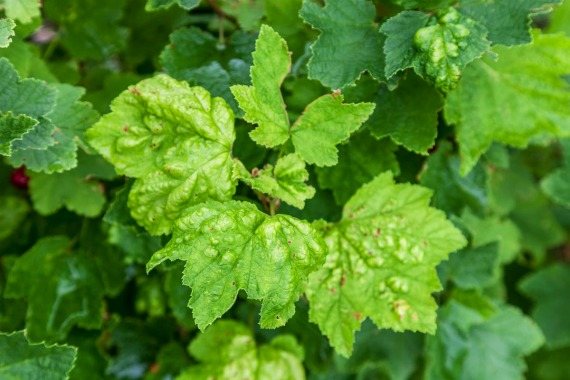

If aphid lesions were found in the garden plot, then the gardener should always be on the lookout. "Faithful" friends of aphids, ants, will try and spread the pest throughout the garden. To reduce labor costs to combat a tiny but voracious pest, preventive work should be carried out to prevent its appearance.
- It is necessary to conduct a constant fight against garden ants, which are carriers of aphids from plant to plant, and hide it in their nests for the winter.
- Keep the trunk circle clean. Remove weeds in a timely manner and, if possible, plant in the immediate vicinity plants that repel the pest: onions, garlic, parsley, coriander, basil. Among flowers, tansy, marigolds, calendula, nasturtium, cosmea have such properties. The smell of flowers does not like aphids, but attracts beneficial insects that eat the pest: ladybugs and lacewings.
- Remove damaged shoots and branches during the spring and fall shaping of the bush.
- Loosen the soil under the plant and around the circumference of the entire crown regularly.
- Remove loose bark from currant trunks, which can serve as shelter for pest eggs during winter.

